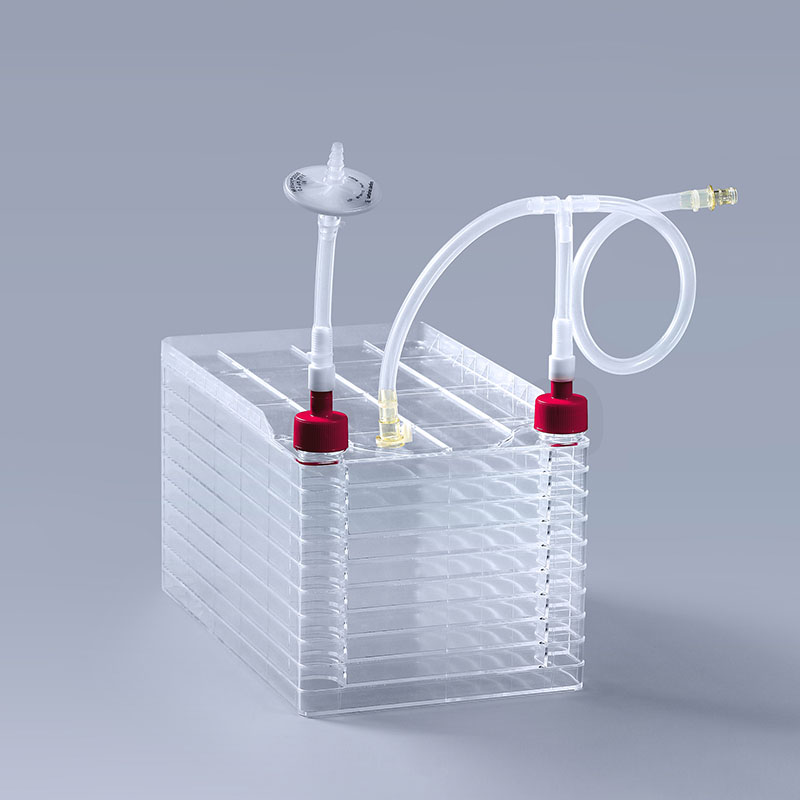With the rapid development of biotechnology, the application of cell culture technology in the fields of medicine, biology and pharmaceuticals has become increasingly widespread. In order to meet the demand for large-scale cell culture, the Cell Factory has emerged as an innovative multi-layer structured cell culture vessel. The design of this technological marvel not only improves the efficiency of cell culture, but also effectively reduces the risk of potential contamination.

The multi-layer structure of the Cell Factory is what makes it unique. Common sizes include 1-layer, 2-layer, 5-layer, 10-layer, and 40-layer, making it capable of meeting cell culture needs at different scales. This multi-layer design allows multiple batches to be cultured simultaneously in a limited lab space, greatly improving culture efficiency. It demonstrates its flexibility and efficiency for both small-scale research and large-scale production.
In order to prevent the introduction of contamination during the cell culture process, the Cell Factory is equipped with a specialized piping system. This system is delicately designed to enable aseptic transfer of liquids between containers, keeping the culture environment clean. This is essential for applications in areas such as the pharmaceutical industry where cleanliness is very important. Operators can transfer liquids in an airtight seal, reducing the risk of outside contamination.
In the future, cell factories are expected to evolve further as biotechnology continues to advance. There may be more levels of design, more intelligent control systems, and a wider range of applications. It will continue to inject new vitality into the development of biology and medicine, and become a powerful engine to push science and technology forward.
The FAI climbed 5.9 percent year-on-year in the first 11 months of 2018, quickening from the 5.7-percent growth in Jan-Oct, the National Bureau of Statistics (NBS) said Friday in an online statement.
The key indicator of investment, dubbed a major growth driver, hit the bottom in August and has since started to rebound steadily.
In the face of emerging economic challenges home and abroad, China has stepped up efforts to stabilize investment, in particular rolling out measures to motivate private investors and channel funds into infrastructure.
Friday's data showed private investment, accounting for more than 60 percent of the total FAI, expanded by a brisk 8.7 percent.
NBS spokesperson Mao Shengyong said funds into weak economic links registered rapid increases as investment in environmental protection and agriculture jumped 42 percent and 12.5 percent respectively, much faster than the average.
In breakdown, investment in high-tech and equipment manufacturing remained vigorous with 16.1-percent and 11.6-percent increases respectively in the first 11 months. Infrastructure investment gained 3.7 percent, staying flat. Investment in property development rose 9.7 percent, also unchanged.
 English
English


















































